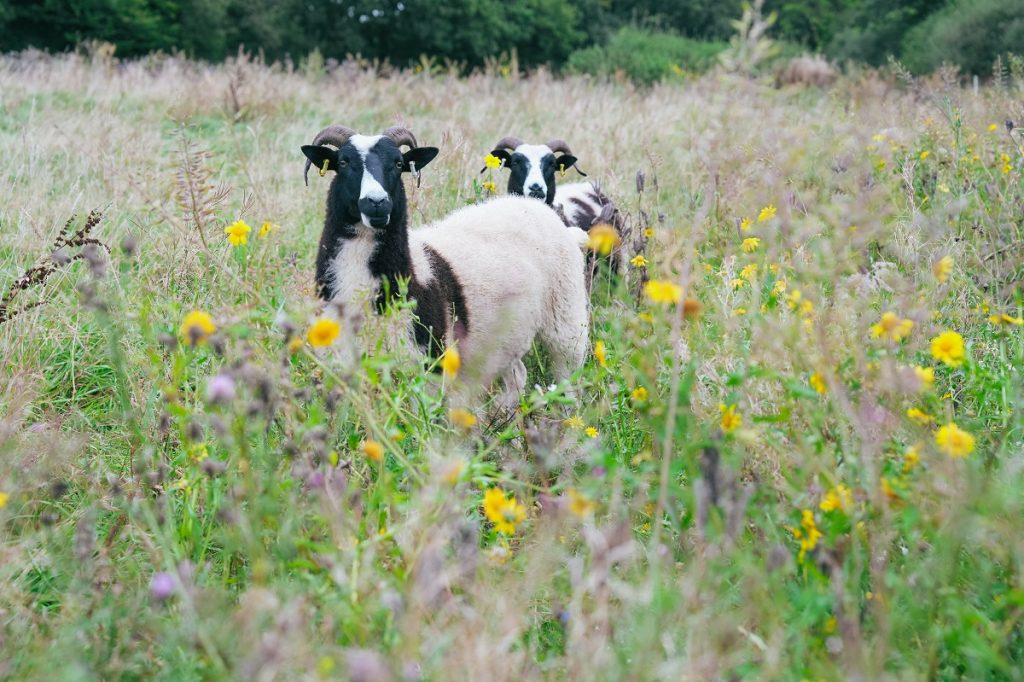As soon as we secured our second field and brought in our first pigs we saw an opportunity to grow wildflowers. Over the years, we’ve experimented with various seed mixes, especially from Cotswold Seeds, and found that choosing the right mix for your soil and conditions is key.
Annuals
One of our favourites is the traditional cornfield mix. Once a common sight in cereal fields, this mix includes corn chamomile, corn poppy, cornflower, corn cockle, and corn marigold — all species that thrive in relatively fertile soils. They’re easy to establish and don’t require nutrient removal, making them ideal for many garden or farm settings.
To support birds like linnets, goldfinches, and bramblings, we often boost this mix with seed-bearing plants such as flax, mustard, and radish. These not only flower beautifully in summer but also provide vital food in autumn and winter.
These seeds are annuals so ideal for bare ground settings. You can expect them to self-seed if you leave them into late summer. This will save on buying fresh seed each year but often the mix of species reduces with time.
Establishing a Permanent Wildflower Meadow
If you’re looking for something longer lasting than annuals, consider sowing perennials alongside your annual mix. In the first year, you’ll enjoy a colourful show from the annuals, while the perennials quietly establish themselves to dominate from year two onwards.
We’ve had particular success using herbal ley mixes, which often include species like chicory, clovers, yarrow, burnet, and occasionally native grasses. These deep-rooted plants are excellent for breaking up compacted soils, improving structure, and restoring health to tired land. They’re also visually stunning and can be managed with an end-of-summer cut or by grazing.
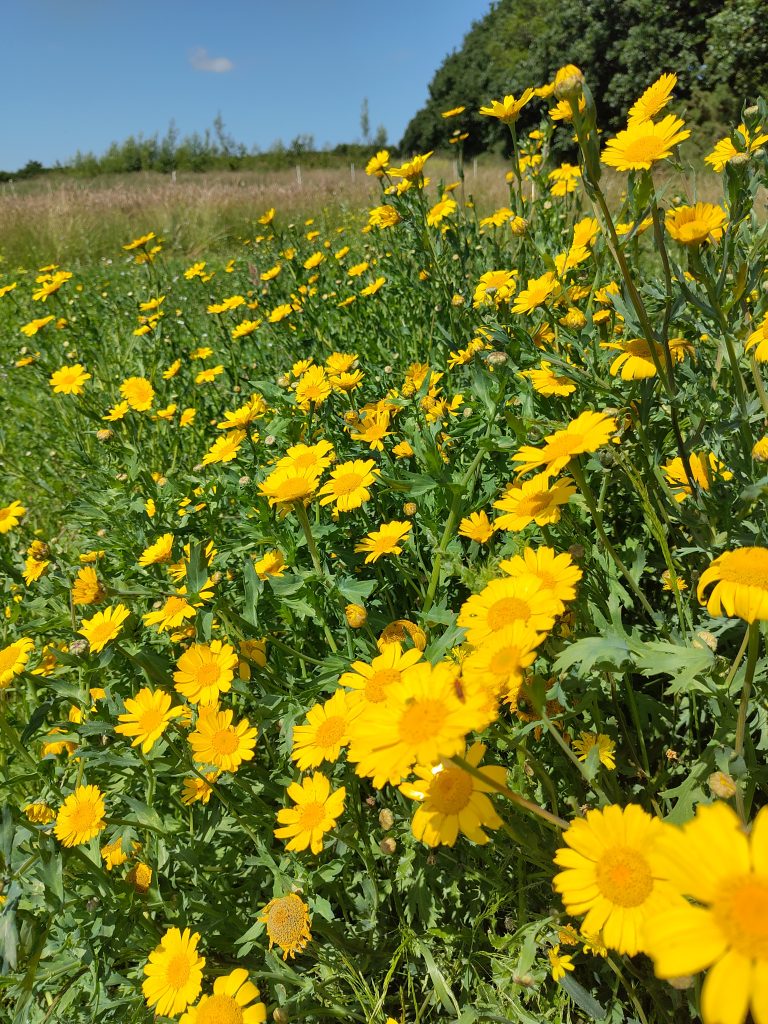
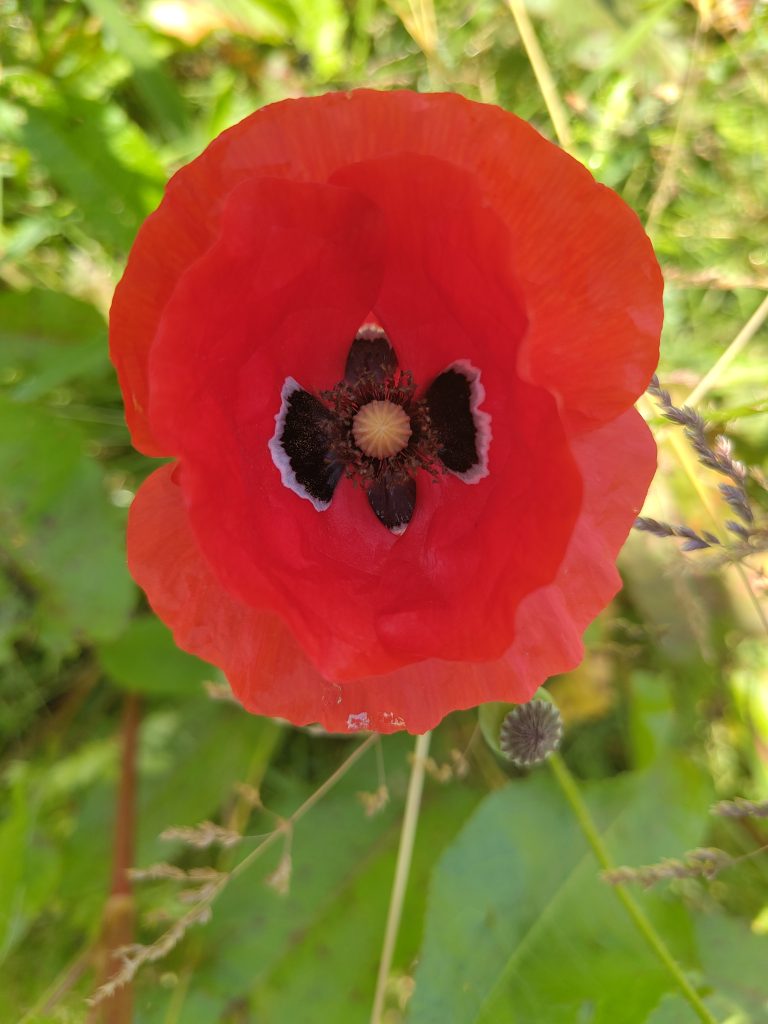
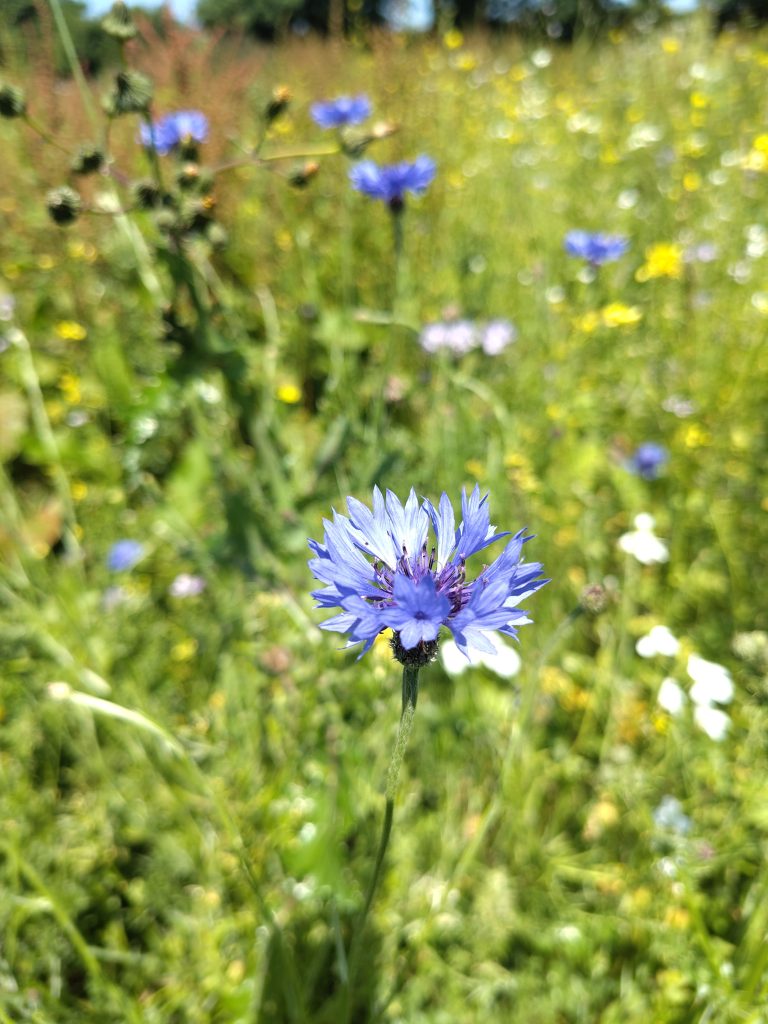
Improving a Lawn or Meadow
This is the work of a patient and observant gardener. Improving a lawn or existing grassland involves careful management — and choosing the right approach for your space.
We’ve seen great results with both overseeding and plug planting into lawns and meadows. Species like yarrow, ox-eye daisy, field scabious, knapweed, and salad burnet make strong, resilient plugs. If you’re dreaming of a hay meadow, you’ll want to include yellow rattle, which should be sown into scarified ground in the autumn.
And if you’re hoping to welcome orchids, be patient — they often take 4–5 years to flower and will only thrive in healthy soils with good fungal networks. We saw incredible examples of this in Montenegro — check out our blog post for more.
Management is Key
Once your wildflowers are in, how you manage the space matters just as much as what you plant. The goal is to stop grasses from dominating and allow wildflowers the light and space they need to thrive.
- Let your lawn or meadow grow through spring and early summer.
- Cut once at the end of summer (usually late August or early September).
- Remove all the cuttings to keep fertility low and give flowers the best chance.
We’ve been thrilled to establish yellow rattle, trefoil, and eyebright in one area of our meadow simply by adjusting our grazing times with our sheep. Done well, this kind of management can significantly increase species diversity over time.
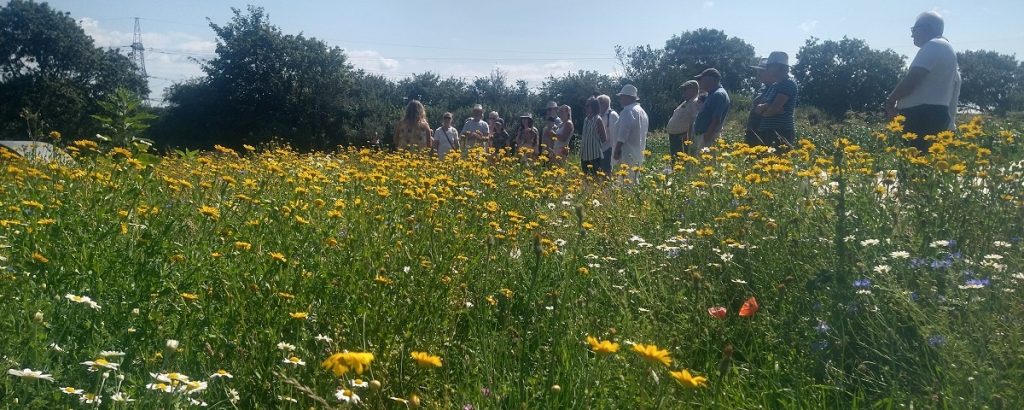
How We Can Help
If you’d like support with your own wildflower project, we’re always happy to help. Real Food Garden offers:
- Grazing services — using our sheep or native cattle to manage meadows and improve species richness.
- Plug plants — grown from seed with care, ideal for introducing wildflowers into lawns or existing pastures.
- Consultancy — from garden-scale advice to larger land restoration plans.
- Grow Your Own workshops — where you can learn hands-on techniques for sowing, managing, and nurturing wildflower areas.
For help with grazing or wildflower advice, contact Amelia directly at amelia@realfoodgarden.co.uk.
Wildflowers connect us to the land — and to the past. From corn poppies in grain fields to orchids blooming quietly underfoot, these plants tell stories and support life in countless ways. Whether you’re working with a window box or a wide field, we hope this inspires you to start sowing.
